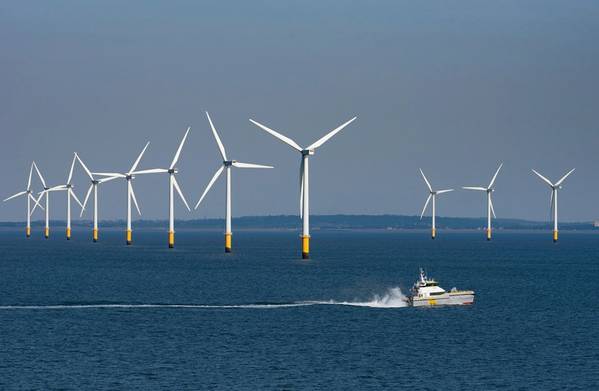
Orsted is expected to trim investment plans and cut dividends on Wednesday as it presents a new strategy but investors are worried that the Danish renewable energy firm may want to raise new capital to stick to its ambitious targets.
Once a green investor darling, the world's biggest offshore wind developer found itself at the centre of a perfect storm of rising inflation, higher interest rates and supply chain delays that forced it and other companies to cancel offshore projects.
The nascent offshore wind industry in the United States alone was last year marked by stalled developments and write-offs that according to project developers like BP, Shell and Equinor could surpass $9 billion.
Orsted halted development of two offshore wind projects in New Jersey in November and said related impairments had surged above $5 billion, more than halving the value of its shares.
Just months before, management had presented a plan to invest 475 billion Danish crowns ($69 billion) to achieve its target of installing 50 gigawatts (GW) of renewable capacity - mostly offshore wind - by the end of the decade.
On Wednesday, at its headquarters outside Copenhagen, the company will again welcome investors and analysts, who broadly speaking say Orsted has two choices: Stick with its ambitious growth plan and raise fresh capital or set less ambitious targets that can be funded by cutting dividends and selling existing assets.
"The 50 gigawatt target has to be removed, and the market knows it. But they need to cut their financial goals so deep that it hurts," said a portfolio manager overseeing investments in Orsted.
Analysts have called for the company to cut dividends, sell assets and reduce costs. Lowering the 2030 target by 10-12 GW would "appear sensible", according to Bernstein.
Bank of America analysts last month recommended buying Orsted shares, arguing the company can avoid the need for new capital by selling half of its U.S. business, reducing capital expenditure by 20% and cutting dividends by a quarter.
Orsted CEO Mads Nipper said in November as the strategic review was launched that there were "no active plans" to raise equity.
"This...left the market nervous that plans could become active and that a capital raise may happen nonetheless given the size of the hole in the balance sheet," Bank of America said.
A decade ago, state-controlled Orsted was a first-mover in offshore wind, beginning a transition from an oil and gas focused utility to a pure renewables player.
"Orsted has been and still is a prestige project for the politicians," said Sydbank analyst Jacob Pedersen. "Investors would like to do without a capital increase but the Danish state may see it differently," he said.
Orsted shares have risen by around two-thirds since early November but are still well below their level before the first writedowns were announced.
Bernstein analysts said there could yet be further writedowns. "100% of previous mistakes might not have been unveiled yet."
($1 = 6.8472 Danish crowns)
(Reuters - Reporting by Jacob Gronholt-Pedersen; additional reporting by Stine Jacobsen and Scott DiSavino; Editing by Kirsten Donovan)